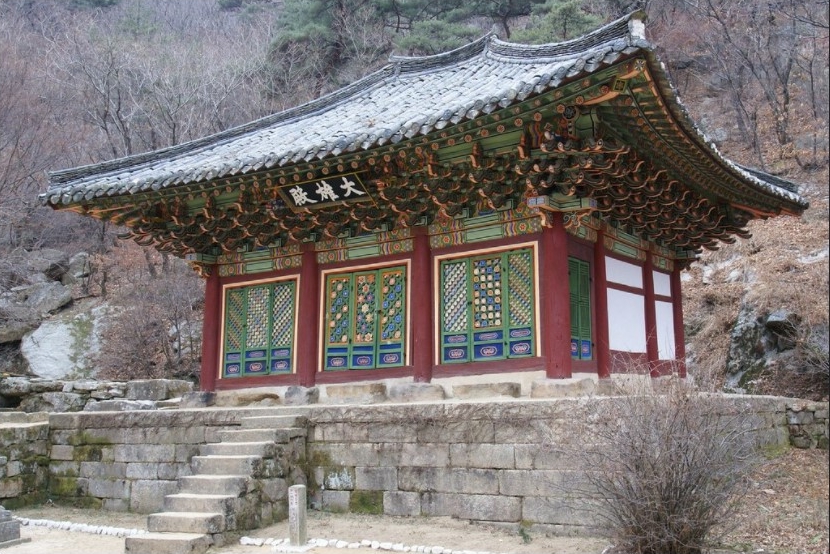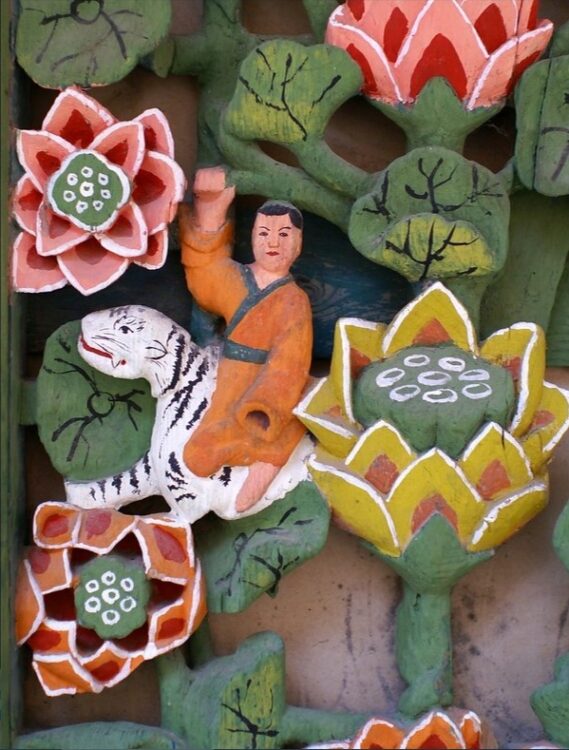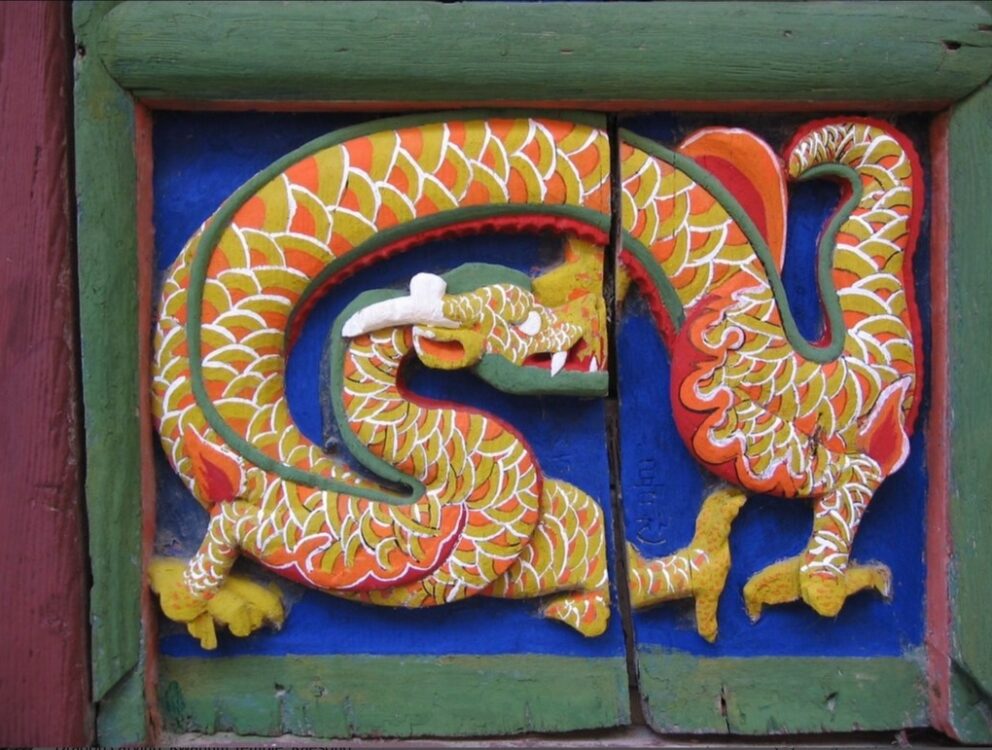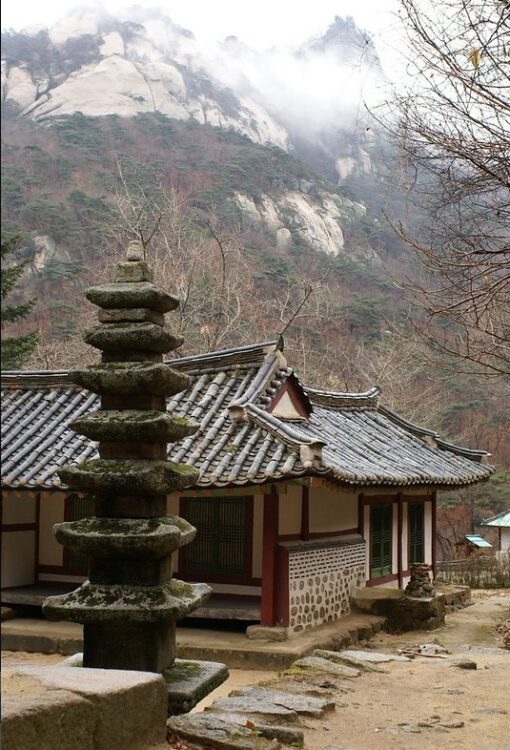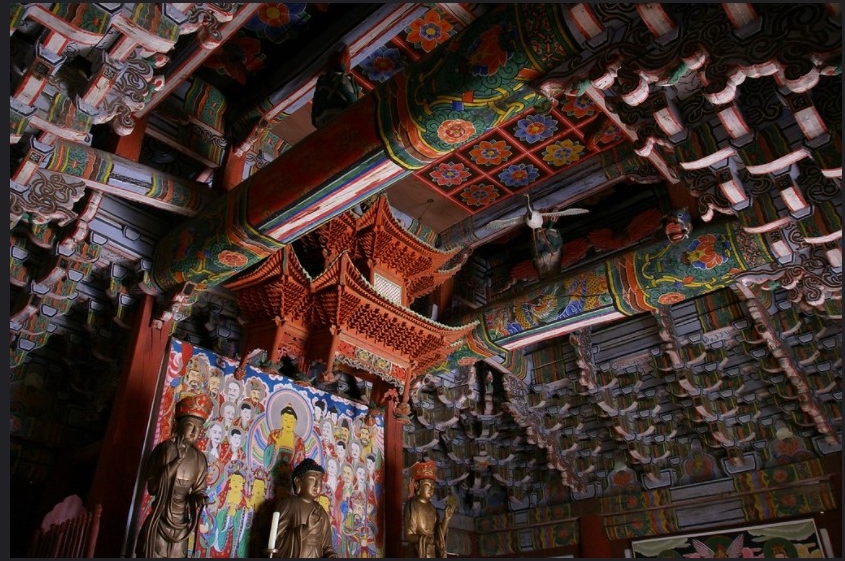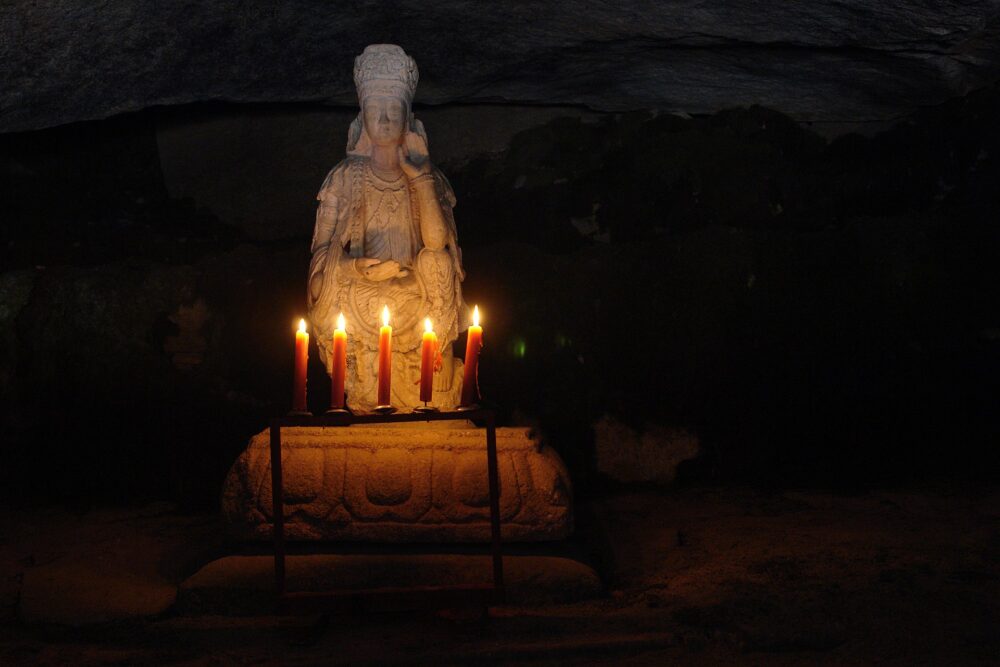Kwanumsa Temple – 관음사 (Kaesong, Hwanghaebuk-to North Korea)
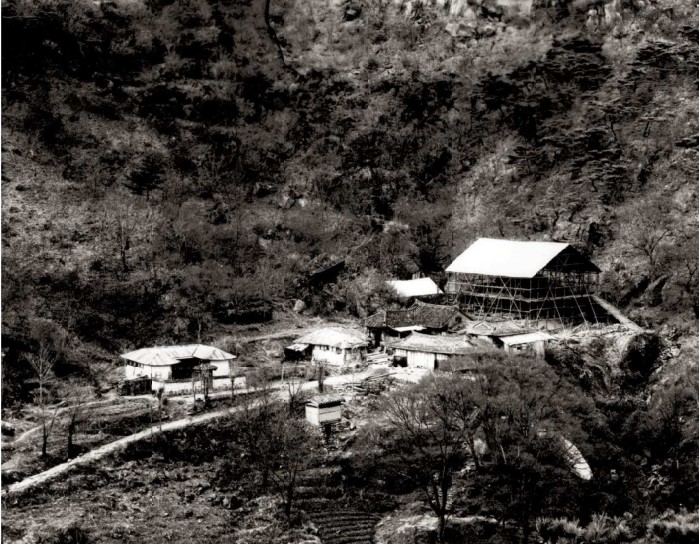
Temple History
Kwanumsa Temple [Gwaneumsa Temple] is located on Mt. Chonmasan near Kaesong, North Korea. The temple is named after Kwanum, or Gwanseeum-bosal (The Bodhisattva of Compassion). And it should be noted that some of the spelling in this post will be based on North Korean spelling. This small temple is located between two mountains in a valley. The two mountains are Mt. Chonmasan (757 m) and Mt. Songgosan; and at the back of the valley, you’ll find Pakyon Falls. Kwanumsa Temple was first established in 970 A.D. by the monk Beopin, when he placed two marble statues of Gwanseeum-bosal inside a cave behind the temple. As for the temple, and the temple shrine halls, they were first constructed in 1393 at the start of the Joseon Dynasty (1392-1910).
Kwanumsa Temple was rebuilt in 1477 after it had collapsed from a destructive landslide. Later, Kwanumsa Temple was renovated in 1646. A rather interesting legend surrounds this temple. During the 1646 renovation, the Taeung-jeon Hall’s [Daeung-jeon Hall] doors were adorned with floral latticework. However, one of these doors was left unfinished. One of the main carvers of the temple was a twelve year old boy named Unna. He was famous for his skill as a carver. One day, while working on these doors on the Taeung-jeon Hall, he heard that his mother was seriously ill, so he asked to be allowed to visit her. Sadly, he was refused; and not long after, his mother died. Unna blamed himself for his mother’s death. If only he wasn’t so skilled as a carver, he could have helped his mother. Out of grief, Unna used a carving axe to cut off his hand. Afterwards, he disappeared into the neighbouring woods, never to be seen of again. Rather interestingly, you can now see a carving of Unna on the front latticework of the Taeung-jeon Hall [Daeung-jeon Hall]. In this wooden carving, Unna has one hand pointed upwards towards the heavens, and he’s riding on the back of a white tiger with his hand missing. This wooden carving of Unna is placed on the door that he left unfinished.
As for the temple itself, Kwanumsa Temple is North Korean National Treasure #125. And the Marble Avalokitesvara Statue of Kwanumsa Temple is National Treasure #156.
Temple Layout
Kwanumsa Temple is a smaller sized temple that simply consists of a Taeung-jeon Hall [Daeung-jeon Hall], monks’ dorms, an auxiliary building, a seven-story pagoda in the main temple courtyard, and the cave to the rear of the temple grounds that houses the historic statue of Gwansseeum-bosal.
You first approach Kwanumsa Temple up a long valley. The trail twists and turns until you come to the temple grounds. The first thing to draw your attention will be the Taeung-jeon Hall [Daeung-jeon Hall]. And out in front of the Taeung-jeon Hall is a slender seven-story stone pagoda to the centre left in the main temple courtyard.
Climbing the stairs to the elevated main hall, you’ll find beautiful floral latticework at the front of the Taeung-jeon Hall. This latticework includes the one-handed image of Unna riding a white tiger. Stepping inside the compact Taeung-jeon Hall, you’ll find a large red canopy, under which resides a triad of statues. In the centre rests a seated image of Seokgamoni-bul (The Historical Buddha). This central image is joined on either side by two standing images dedicated to Munsu-bosal (The Bodhisattva of Wisdom) and Bohyeon-bosal (The Bodhisattva of Power). Looking up and around the interior of the Taeung-jeon Hall, you’ll find beautiful and intricate wooden eaves. And to the right front of the main hall, you’ll find both the auxiliary building and the monks’ dorms.
And to the rear of the temple grounds, you’ll find the Kwanum-gul Cave. This cave houses the Marble Avalokitesvara Statue of Kwanumsa Temple, which is National Treasure #156. This holy site has existed at the temple since its founding. The seated image of the Marble Avalokitesvara Statue of Kwanumsa Temple is made of milky-white marble, and it stands 1.2 metres in height. It wears a beautiful crown, and it’s clothed in beautiful, delicate clothing. It’s believed that the the Marble Avalokitesvara Statue of Kwanumsa Temple dates back to 970 A.D. and the founding of Kwanumsa Temple.
On your way up to the Kwanum-gul Cave, you’ll find a tortoise-based stele on a large boulder. It’s unclear when this stele dates back to, but it definitely seems older in age.
How To Get There
For now, in today’s political climate, you don’t. But hopefully one day soon we can. Below is a map of where to find Kwanumsa Temple in Kaesong, Hwanghaebuk-to, North Korea.
Overall Rating: 8/10
Again, for being located in the off-limits North Korea, it rates as high as it does. Hopefully one day soon it won’t be so off-limits. The main highlights to Kwanumsa Temple is the Taeung-jeon Hall [Daeung-jeon Hall] and its beautiful latticework, as well as the Kwanum-gul Cave with the Marble Avalokitesvara Statue of Kwanumsa Temple housed inside it. Also adding to the temple’s overall rating its the location in which it’s situated.
Historical Pictures of Kwanumsa Temple
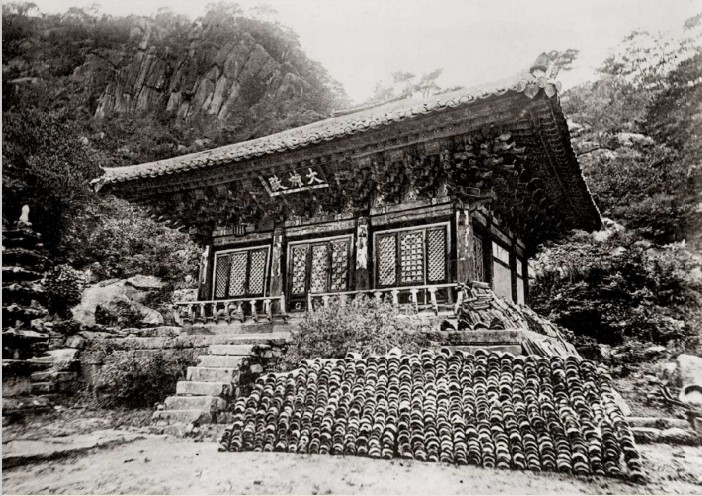
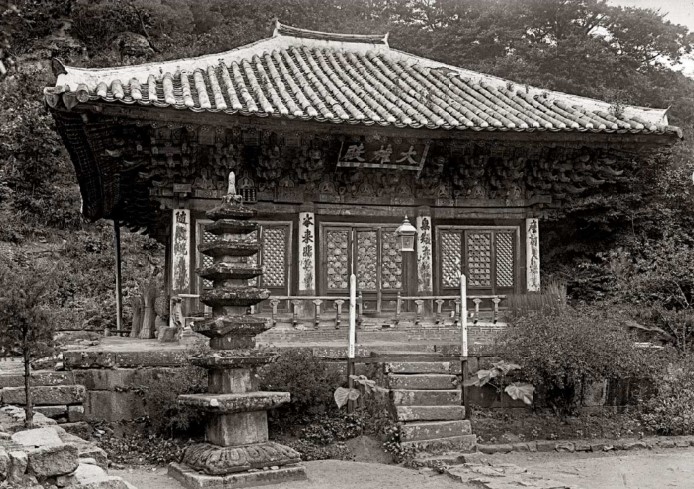

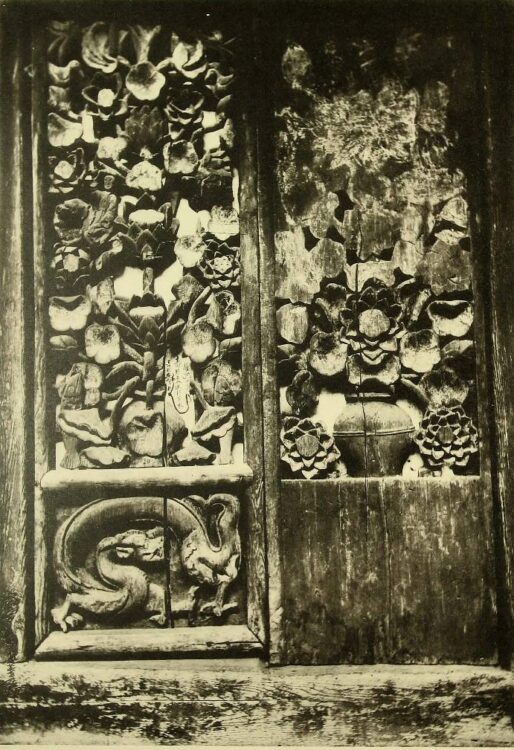
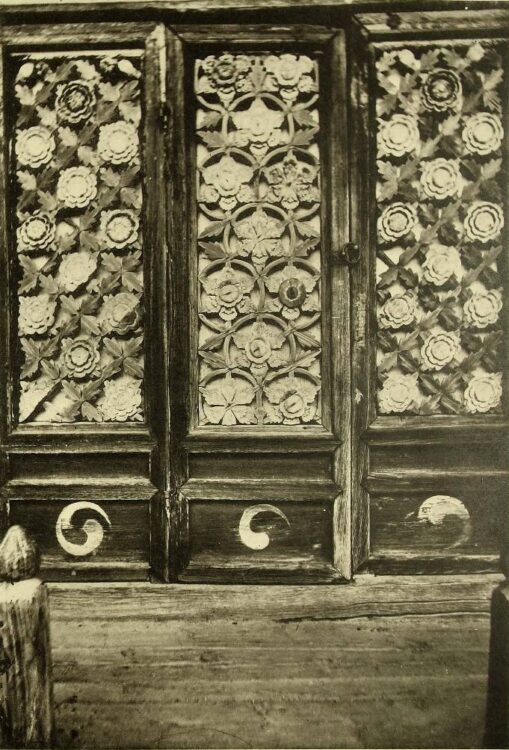
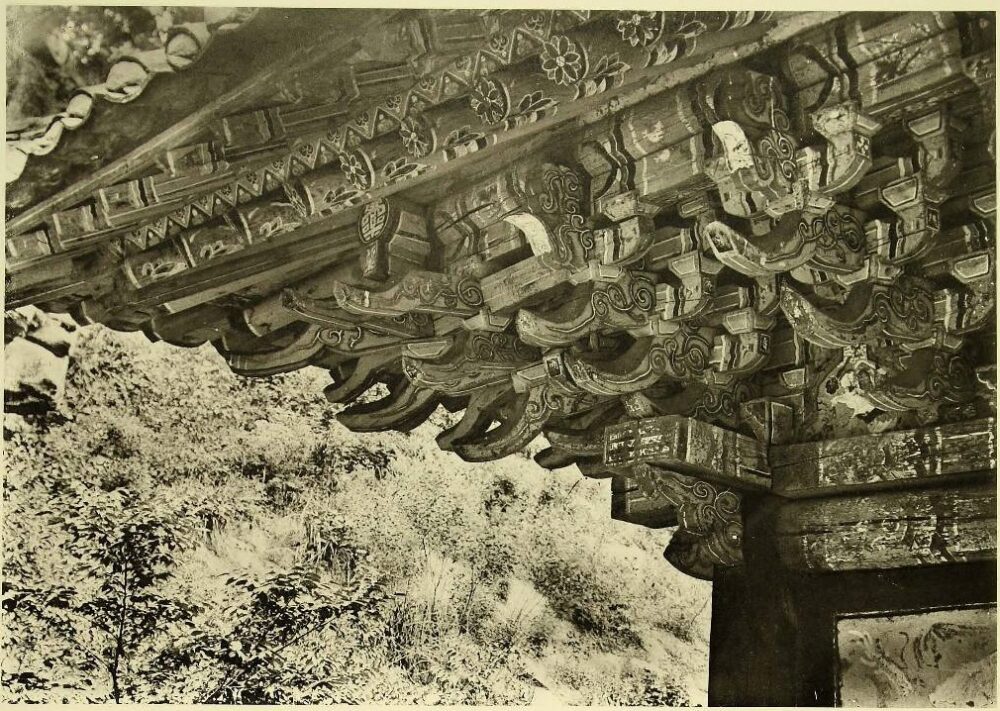
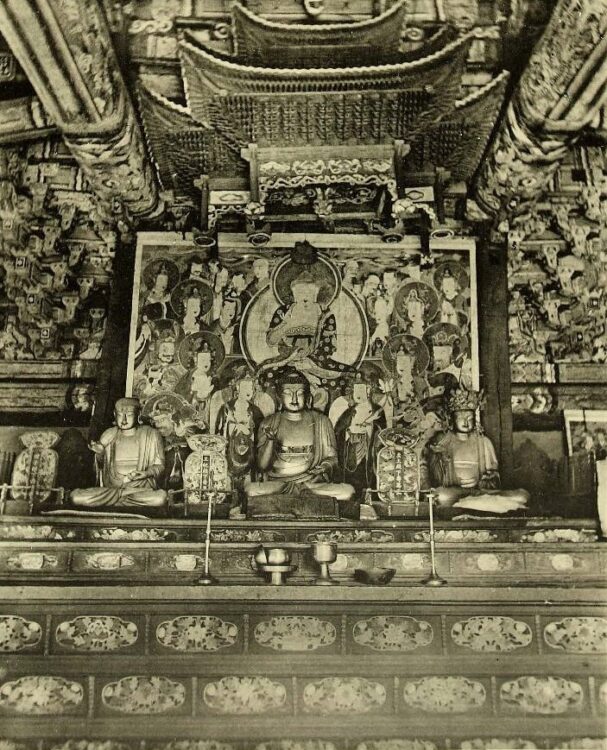

Kwanumsa Temple Now (Dec., 2007)
